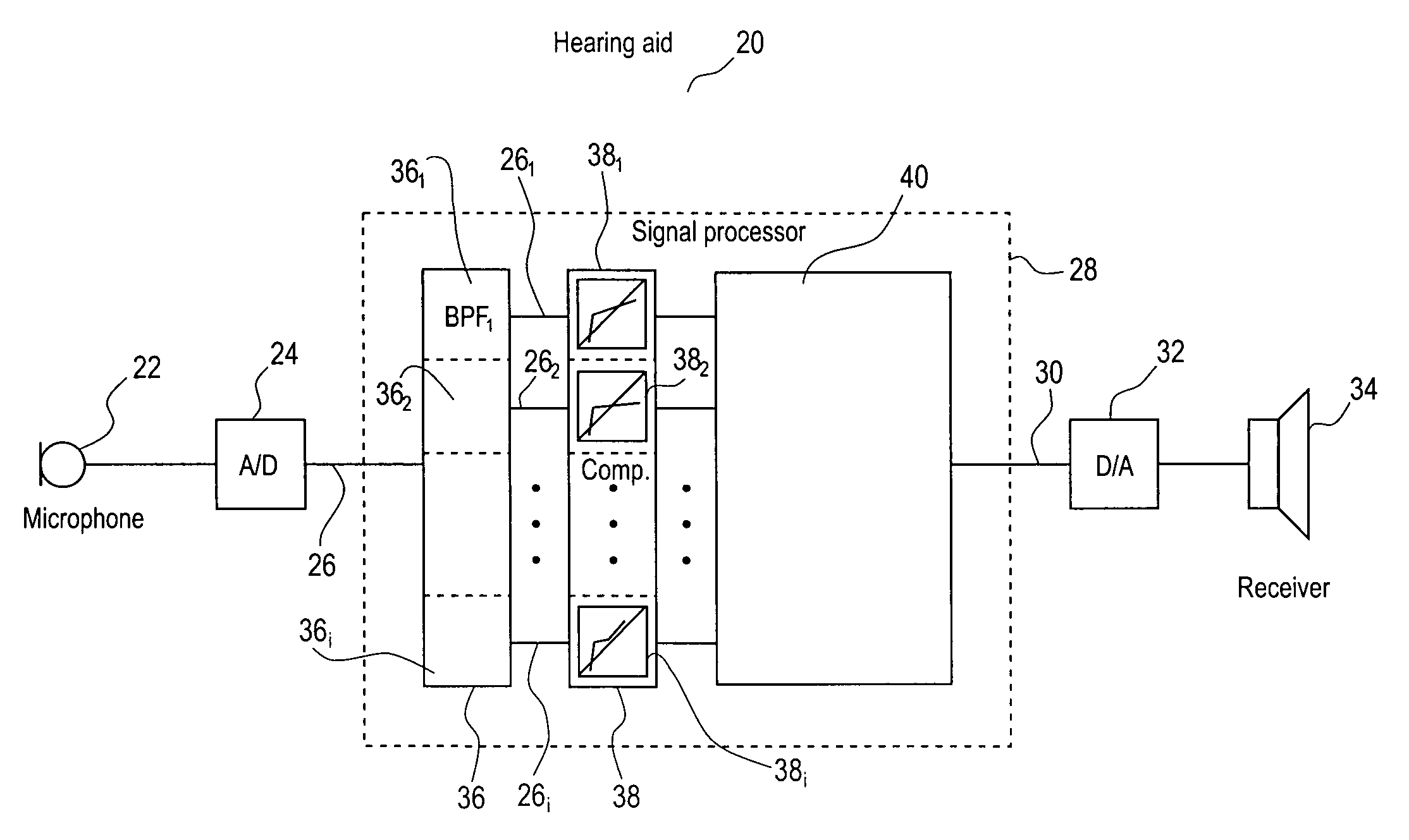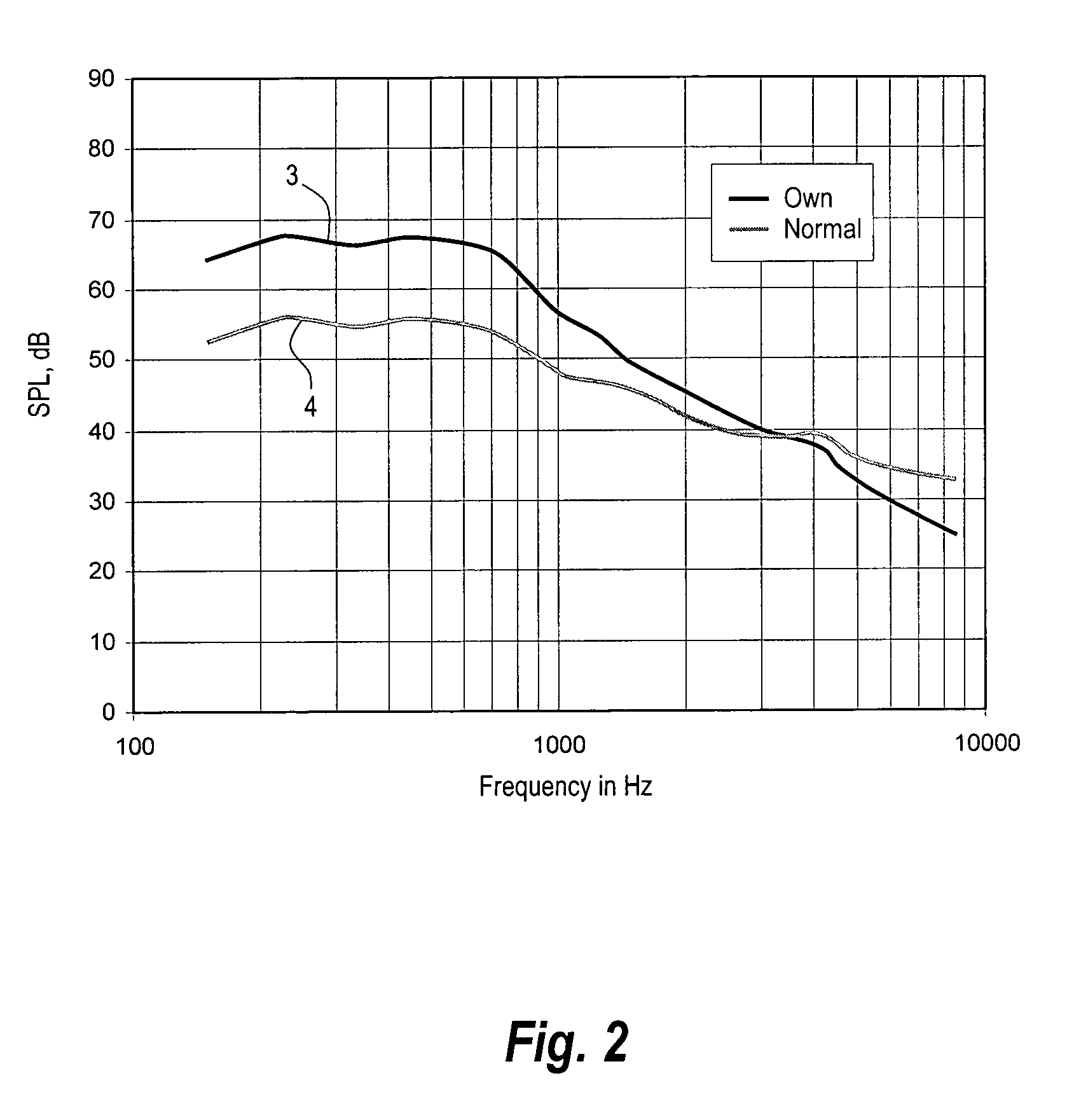Suppression of perceived occlusion
a technology of perception and suppression, applied in the field of hearing aids, can solve the problems of acoustic feedback, occlusion effect electronic compensation, and discomfort of the position of the mechanical member in this part of the ear canal for the user, and achieve the effect of reducing the risk of occlusion
- Summary
- Abstract
- Description
- Claims
- Application Information
AI Technical Summary
Benefits of technology
Problems solved by technology
Method used
Image
Examples
Embodiment Construction
[0028]FIG. 3 shows a plot of a prior art compressor characteristic, i.e. a plot of the compressor output level as a function of the input level, both in SPL. The characteristic comprises two linear segments 5, 6, that are interconnected at a knee-point 10, typically positioned at 50 dB SPL input level. Below the knee point 10, the linear segment 7 has substantially no compression, i.e. the gain is a constant gain, suitable for compensating the hearing loss at low input signal levels. Above the knee point 10, the segment 6 has a compression ratio above 1, typically 2:1, for compensating for recruitment. Recruitment denotes the effect of a sensorineural hearing loss where loudness increases rapidly with increased sound pressure just above the hearing threshold and increases normally at high sound pressures. The hearing threshold is the lowest sound level at which sound is perceived. The compression ratio of a segment is equal to the reciprocal value of the slope of the segment. In a l...
PUM
 Login to View More
Login to View More Abstract
Description
Claims
Application Information
 Login to View More
Login to View More - R&D
- Intellectual Property
- Life Sciences
- Materials
- Tech Scout
- Unparalleled Data Quality
- Higher Quality Content
- 60% Fewer Hallucinations
Browse by: Latest US Patents, China's latest patents, Technical Efficacy Thesaurus, Application Domain, Technology Topic, Popular Technical Reports.
© 2025 PatSnap. All rights reserved.Legal|Privacy policy|Modern Slavery Act Transparency Statement|Sitemap|About US| Contact US: help@patsnap.com



